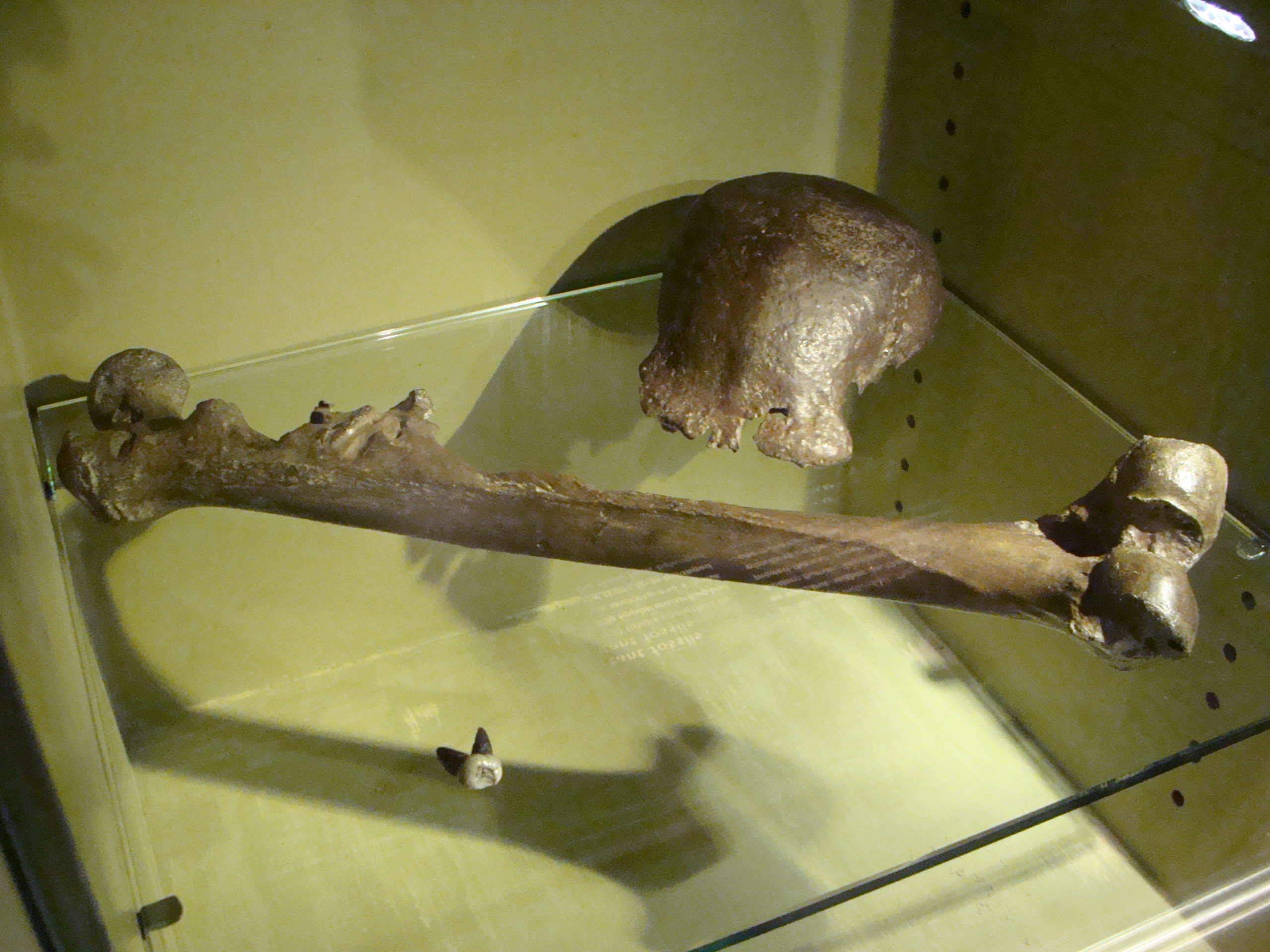Erectus
Porsche introduced its 911 “Carrera” model at the Frankfurt IAA Motor Show in 1963. It represented the first large-scale production car featuring a rear spoiler (its characteristic “ducktail”). This vehicle featured an air-cooled six-cylinder flat engine delivering 130 horsepower and an outstanding top speed of 210 kilometers per hour (~130 miles/hour). Seven generations later, the Porsche 911 has incorporated innovations such as all-wheel drive and water-cooling turbo engines delivering up to 355 horsepower. However, evolutionarily speaking, the Porsche 911 design only represented an updated version over its predecessor, the Porsche 356.*
In 1893, the Dutch paleontologist Eugène Dubois found the prototype of the modern human body. Erectus was to Sapiens what the Porsche 356 represented for the 911 model.
Homo erectus
From the Latin homo (human being) and erectus (upright). “The upright human.”
There were other species of Homo (the “human genus”) filling the temporal and anatomical gaps between H. erectus and H. sapiens. Erectus was not the first human species either. However, Erectus is the first hominin clearly built more like us (than to apes), perhaps too much for the discoverer’s taste.
Dubois was conducting fieldwork on the banks of the Trinil river in Java (Indonesia). He was aiming to find “the missing link,” an intermediate form between apes and humans. A genus name was ready for it: Anthropopithecus (the “human-ape”). However, the name was already taken at the time. It was being used for chimpanzees (although it was replaced by the genus Pan in 1895).
After Darwin published “On the Origin of Species” in 1859, Haeckel predicted that a transitional form between apes and humans would be found. Where? In Indonesia (then widely known as the “Dutch Indies”). He even proposed a genus name for the eventual discovery: Pithecanthropus (the “ape-human”). Dubois went with it. Some findings are fortuitous, only helped by the enthusiasm and hard work.
Erectus’s first remains included a partial cranium (calotte), a molar, and a femur (see cover image). The femoral morphology clearly indicates a modern-like upright posture and gait (and thus the species name). Posterior discoveries of more complete specimens (e.g., the “Turkana boy”) showed that, in general, Erectus has an overall modern-human appearance. Hence eventually, Pithecanthropus was substituted by Homo. The most striking differences between Erectus and Sapiens concentrate in the skull (e.g., well-developed brow ridges or supraorbital torus, thicker cranial vault). On average, Erectus exhibits smaller endocranial volumes than Sapiens. However, some fossils reach the lower range of modern Sapiens. Starting around 2 million years ago, Erectus is found in various African locations, and (soon after) it reaches Europe and Asia. Erectus is the first human found outside Africa.
Outside the mother continent, but close to it, I first met Erectus. I spent the summers volunteering in paleontological digs during my late teens. I considered it the best seasonal job ever. The only difference is that instead of cash, the currency was the chance to work with interesting people and free food (sometimes beer too!). The region around Orce (Andalucía) contains some of the most incredible sedimentary extensions covering the time when the first humans occupied new territories outside the African continent. I was mesmerized by what my fellow mates and I were uncovering: The skeleton of a butchered elephant relative. It was a young female individual in anatomical articulation, except for its missing limbs and cranium (i.e., the “hams and fat”). It was a geological accident, the snapshot of a “grocery day” in Erectus’ life from 1.3 million years ago. In even older sites in Africa, Erectus was already making Acheulean lithic tools (e.g., hand axes), the first technology (culture) incorporating symmetry.
All things considered, H. erectus represents a critical biocultural transition in human evolution. The causes of such a turning point? A widespread view links the origins of long legs and bigger brains with more efficient walking—and endurance running—in a savanna environment. The reason? Cooperation in hunting parties, chasing prays during long distances until their exhaustion. Bigger brains would be the outcome of selective pressures to develop better technology to process animal (food) resources.
An alternative integrated biological perspective argues that the emergence of Erectus was the culmination of a trend that started millions of years before, caused by large-scale fluctuations in the environment. The fossil record indicates that Erectus individuals were very variable in time and space (e.g., some were as big as most Sapiens today, others were tiny). This view reasons that the combination of size variability, larger brains, and more sophisticated tools (associated with smaller teeth) indicates that Erectus was adapted for versatility. Other species are very tight to a specific environment (think of a cow in a pasture). On the other hand, imagine a biped primate that can travel long distances, coordinate with others, and make tools on the go when needed.
Group cooperation and dietary flexibility might have allowed Erectus to conquer the (Old) World. Such feat was only overcome by another species—H. sapiens— that originated ~200,000 years ago. Archaeological studies show that these Sapiens were likely more dynamic, capable of using elements of their environment to produce more sophisticated tools, even art.
The modern human body is pretty ancient. However, the Sapiens Operating System was still an early beta at the time. In some regards, humans are not different from cars.
* In turn, the Porsche 356 design was likely adopted from the Volkswagen Beetle, and so on.
Thanks to David Alba, Marc Furió, Ashley Hammond, Santiago Catalano, Nathan Thompson, and Laia Salles Diez for reading drafts of this.
Cover image by Peter Maas (CC BY-SA 3.0).

